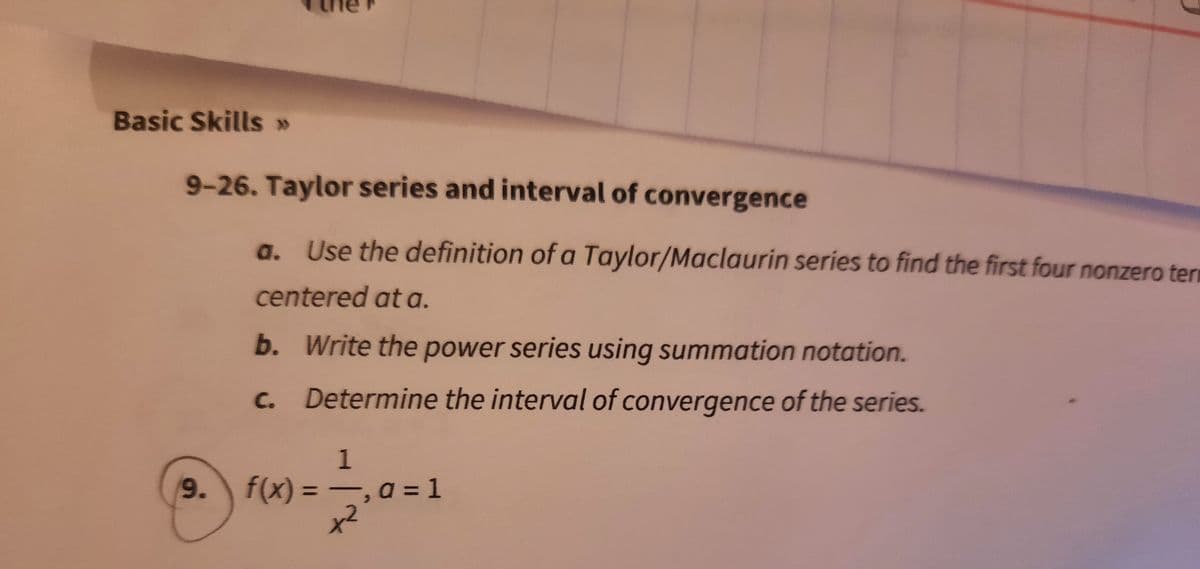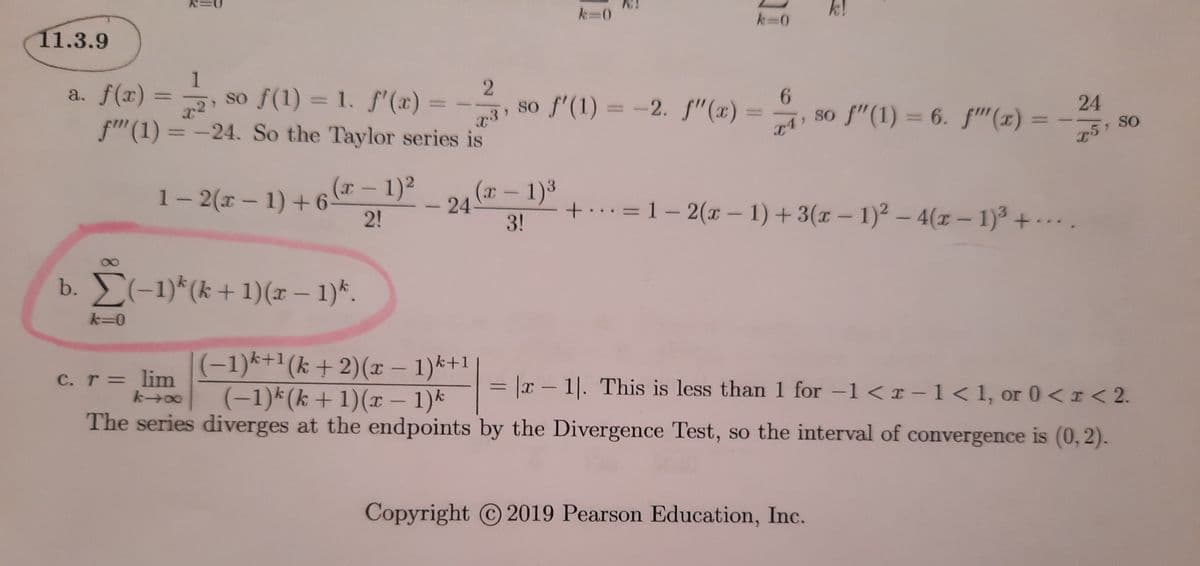Calculus: Early Transcendentals
8th Edition
ISBN:9781285741550
Author:James Stewart
Publisher:James Stewart
Chapter1: Functions And Models
Section: Chapter Questions
Problem 1RCC: (a) What is a function? What are its domain and range? (b) What is the graph of a function? (c) How...
Related questions
Question
100%
How did we get the power series summation? How did we know to set it up like this.( Circled in pink)

Transcribed Image Text:Basic Skills »
9-26. Taylor series and interval of convergence
a. Use the definition of a Taylor/Maclaurin series to find the first four nonzero tern
centered at a.
b. Write the power series using summation notation.
C.
Determine the interval of convergence of the series.
1
9.
f(x) = -, a = 1
%3D

Transcribed Image Text:k!
k=0
k=0
11.3.9
a. f(x) =
1
so f(1) = 1. f'(x)
3 so f'(1) = -2. f"(x)
24
so f"(1) = 6. f"(x) = –
SO
%3D
%3D
%3D
f"(1) = -24. So the Taylor series is
15 SO
%3D
1- 2(x – 1) + 6
2!
(x-1)2
(x- 1)3
24
+.··=1– 2(x – 1) + 3(x – 1)² – 4(x – 1)3 + ..
3!
|
b. E(-1)*(k+1)(x – 1)*.
k=0
(-1)k+1(k + 2)(x – 1)k+1
(-1)k(k + 1)(x – 1)k
C. r= lim
= |x – 1|. This is less than 1 for -1 <x -1< 1, or 0< I< 2.
%3D
The series diverges at the endpoints by the Divergence Test, so the interval of convergence is (0, 2).
Copyright 2019 Pearson Education, Inc.
2.
Expert Solution
This question has been solved!
Explore an expertly crafted, step-by-step solution for a thorough understanding of key concepts.
Step by step
Solved in 2 steps with 1 images

Recommended textbooks for you

Calculus: Early Transcendentals
Calculus
ISBN:
9781285741550
Author:
James Stewart
Publisher:
Cengage Learning

Thomas' Calculus (14th Edition)
Calculus
ISBN:
9780134438986
Author:
Joel R. Hass, Christopher E. Heil, Maurice D. Weir
Publisher:
PEARSON

Calculus: Early Transcendentals (3rd Edition)
Calculus
ISBN:
9780134763644
Author:
William L. Briggs, Lyle Cochran, Bernard Gillett, Eric Schulz
Publisher:
PEARSON

Calculus: Early Transcendentals
Calculus
ISBN:
9781285741550
Author:
James Stewart
Publisher:
Cengage Learning

Thomas' Calculus (14th Edition)
Calculus
ISBN:
9780134438986
Author:
Joel R. Hass, Christopher E. Heil, Maurice D. Weir
Publisher:
PEARSON

Calculus: Early Transcendentals (3rd Edition)
Calculus
ISBN:
9780134763644
Author:
William L. Briggs, Lyle Cochran, Bernard Gillett, Eric Schulz
Publisher:
PEARSON

Calculus: Early Transcendentals
Calculus
ISBN:
9781319050740
Author:
Jon Rogawski, Colin Adams, Robert Franzosa
Publisher:
W. H. Freeman


Calculus: Early Transcendental Functions
Calculus
ISBN:
9781337552516
Author:
Ron Larson, Bruce H. Edwards
Publisher:
Cengage Learning